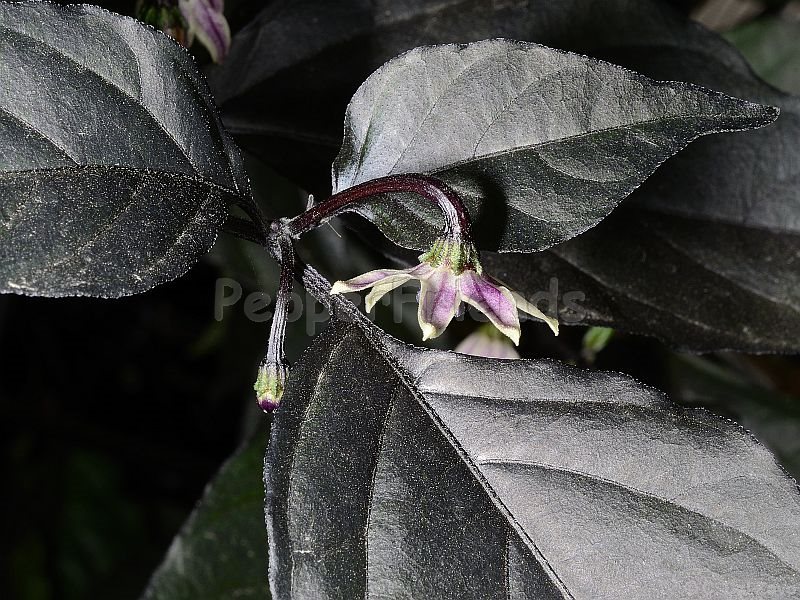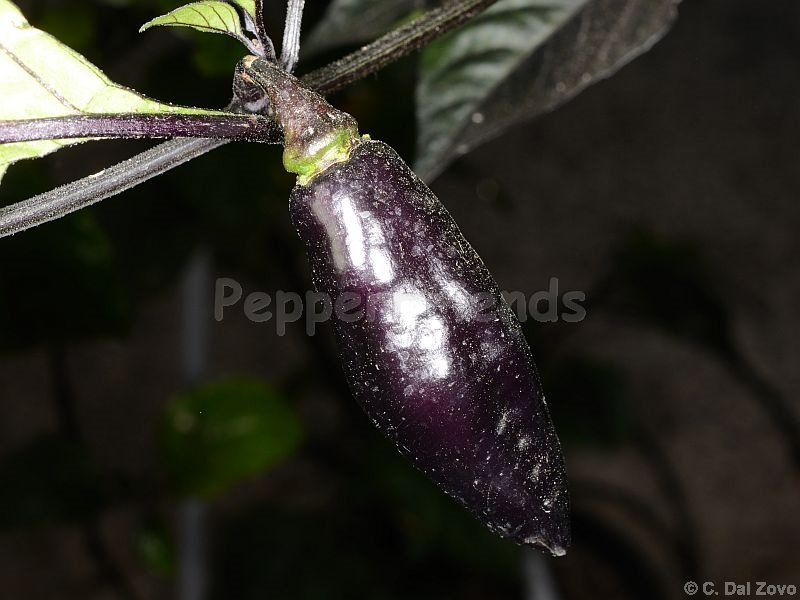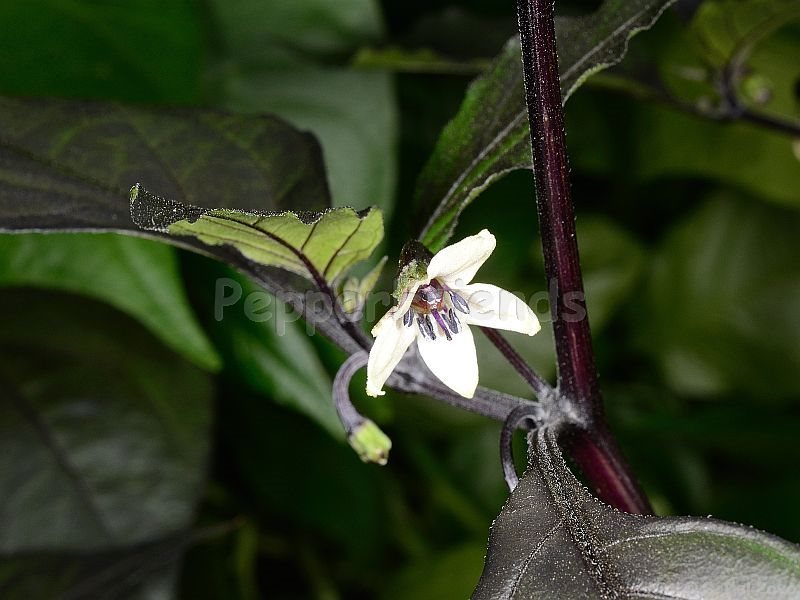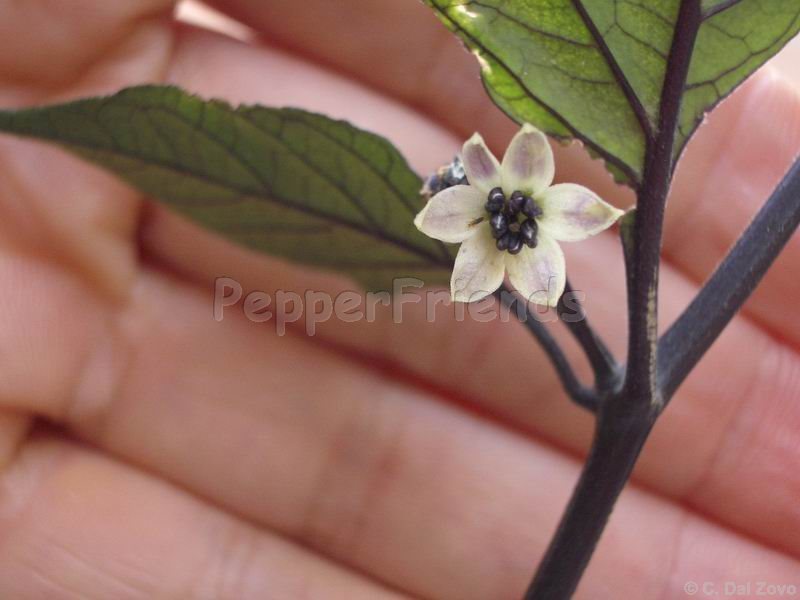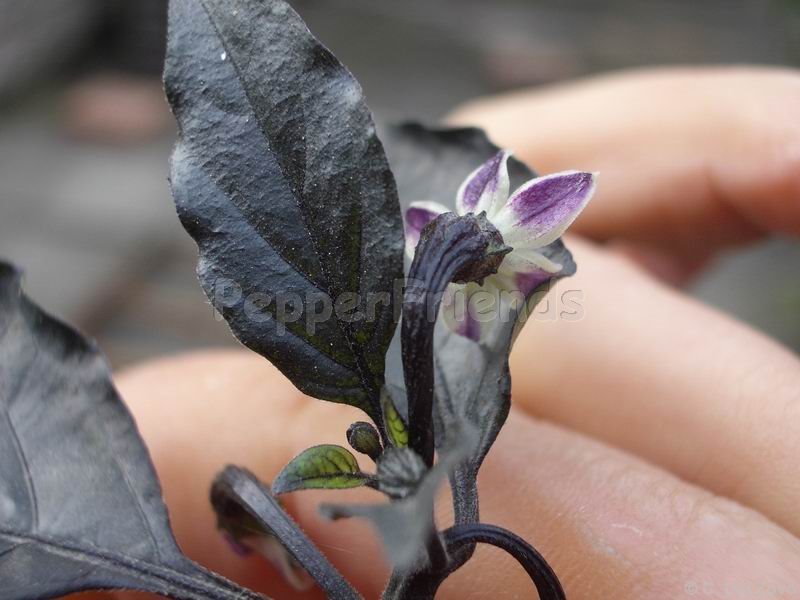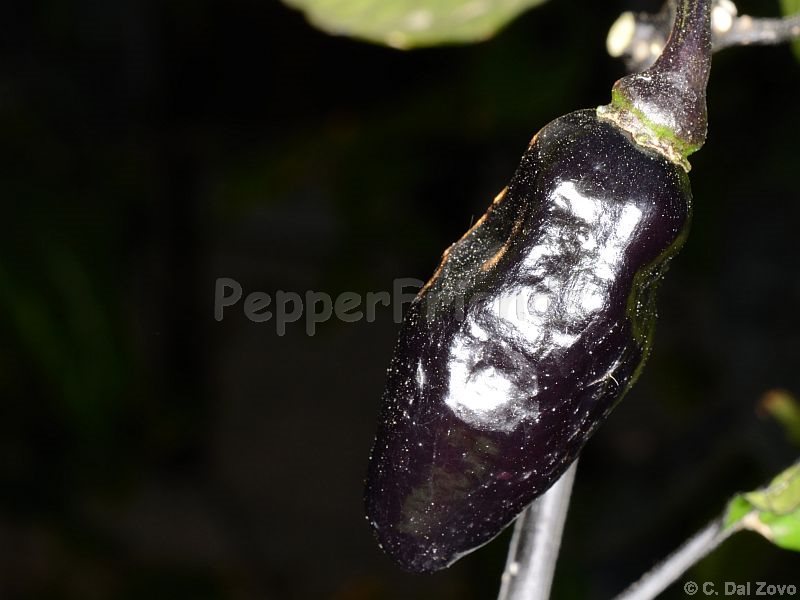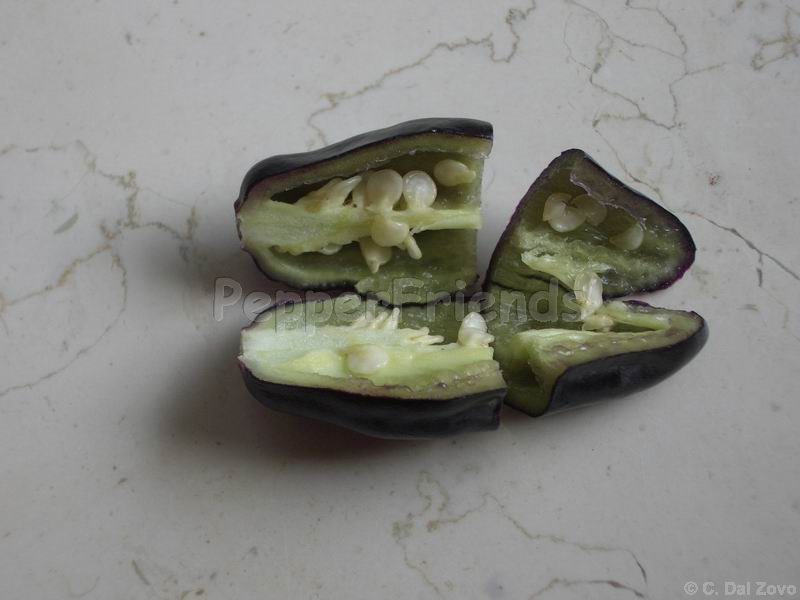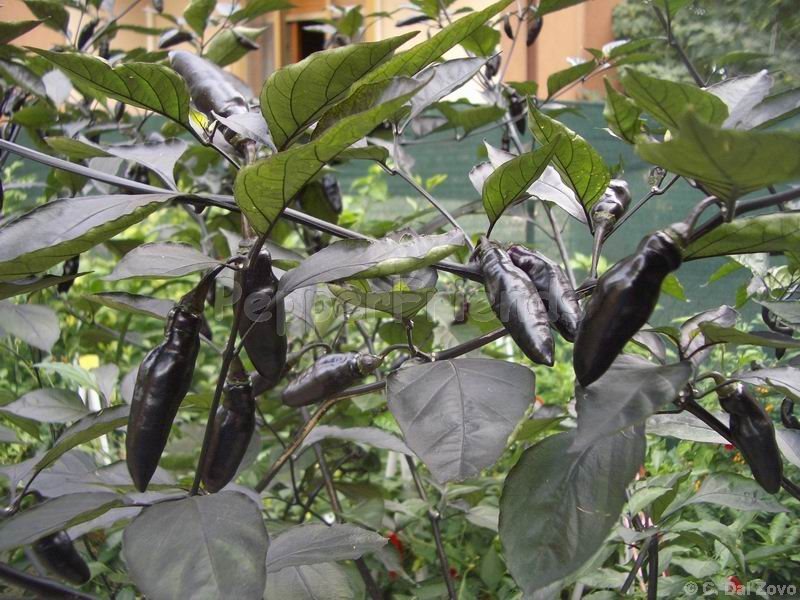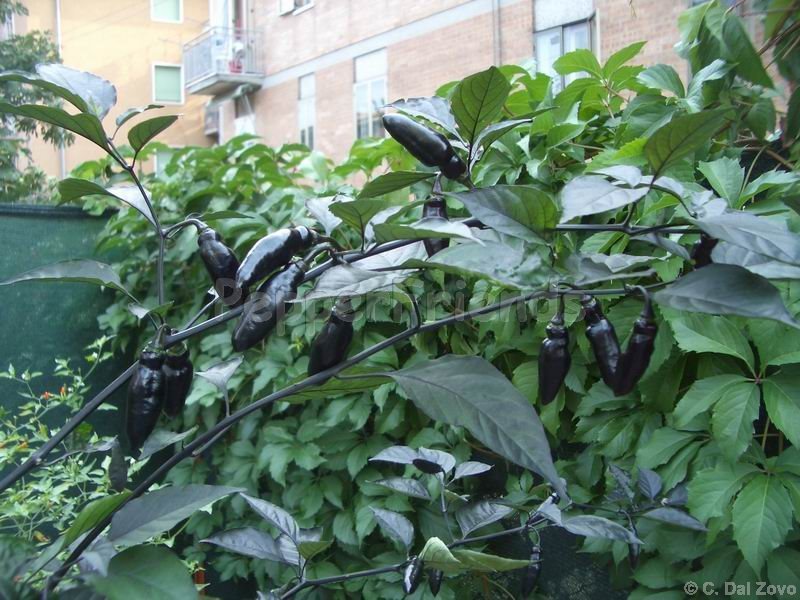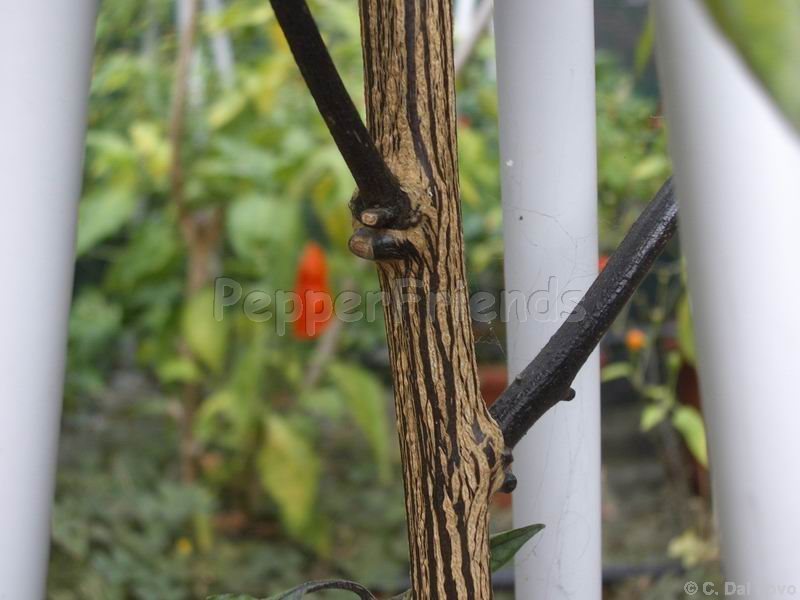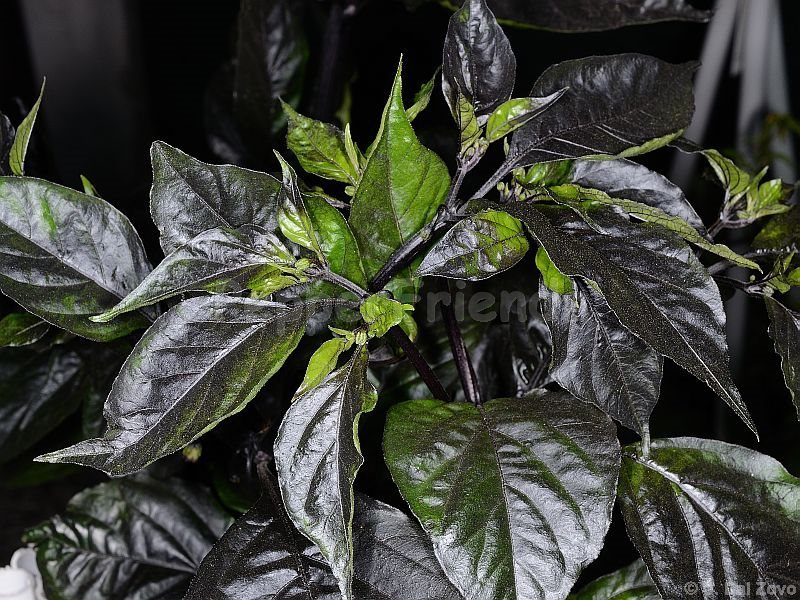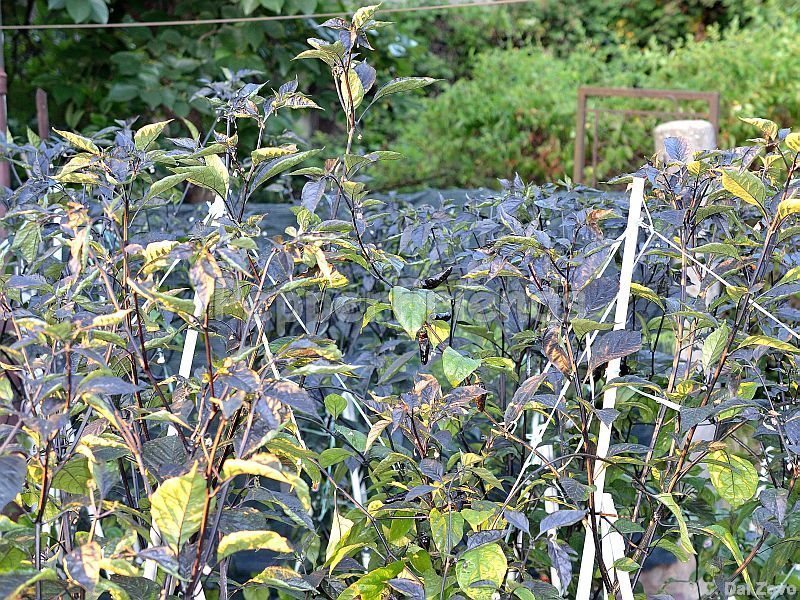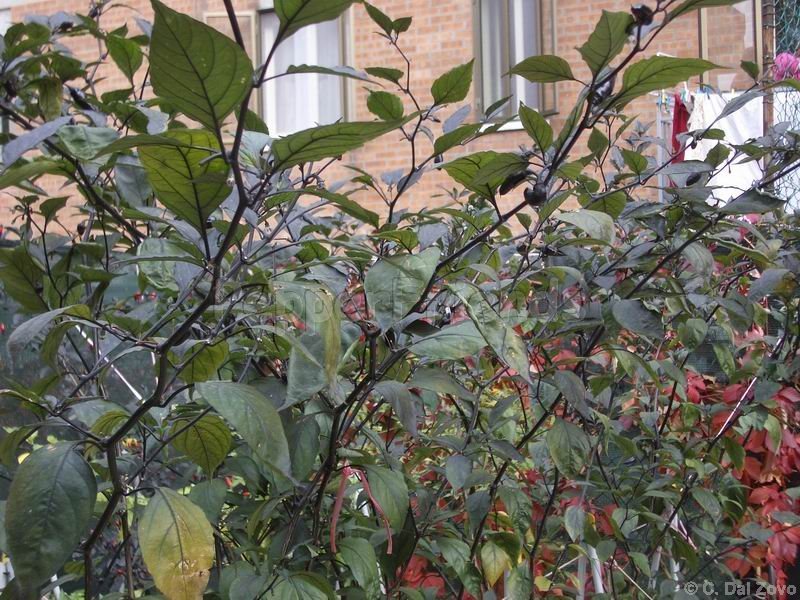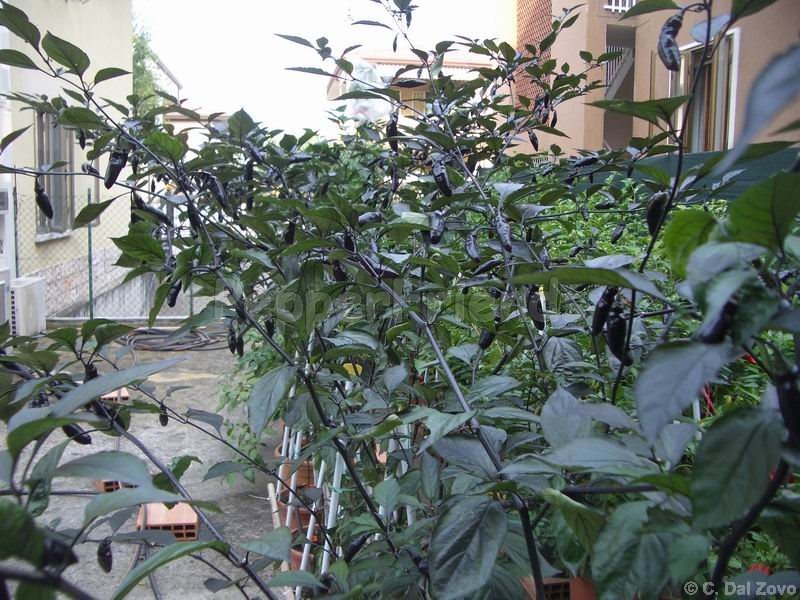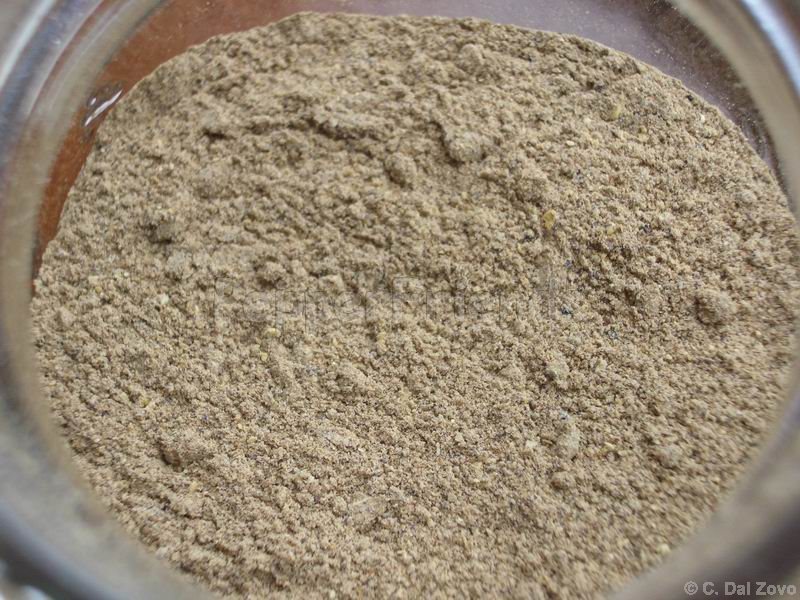

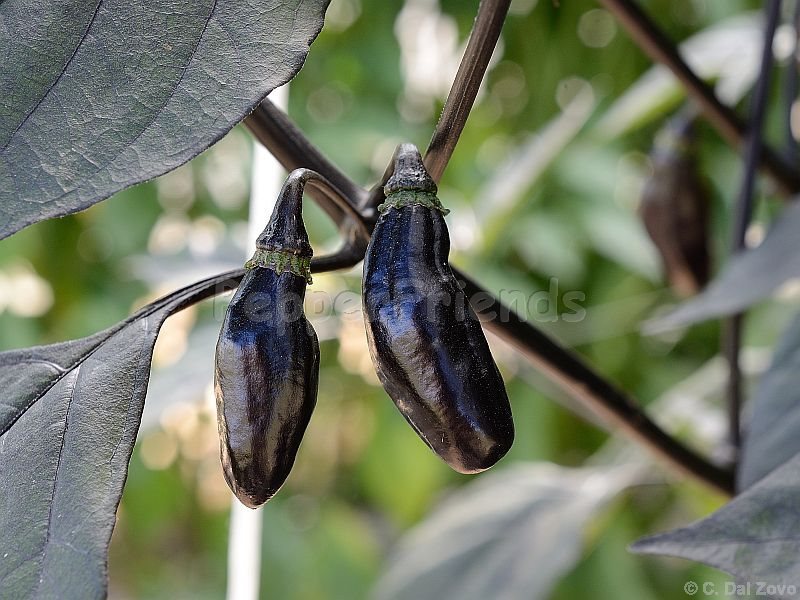
La varietà a foglie scure (forse risultato di un incrocio con un C.annuum purple). Caratteristica peculiare è che i frutti non cambiano colore a maturazione. La pianta ha un'origine misteriosa.
200.000 SHU
0 SHU 2.200.000 SHU
Semi disponibili presso l'Associazione Pepperfriends
Compilatore: Lonewolf 2008
Capsicum chinense Jacq
Pimenta da Neyde
La varieta' Pimenta da Neyde e' un Capsicum chinense a foglie scure (forse risultato di un incrocio con un Capsicum annuum purple).
Caratteristica peculiare e' che i frutti non cambiano colore a maturazione.
La pianta ha un'origine misteriosa.
Secondo quanto riportato da Neyde Hidalgo che l'ha "scoperta", e' nata spontaneamente nel suo giardino;
non si tratta di un semplice seme disperso da un frutto ibrido tra altre varieta' coltivate ...
Neyde non coltivava ancora peperoncini!
La sua passione per i peppers e' l'effetto della scoperta del Pimenta da Neyde, non la causa.
Ecco le parole di Neyde stessa (nella traduzione portoghese-inglese di suo nipote):
The Pimenta-da-Neyde (Neyde's Pepper), which was first called Pimenta Desconhecida (Unknow Pepper), was "born" in my garden and nobody knows how. May have come in some soil that I bought, or maybe it was brought by birds, I really don't know. I had no peppers then. When I saw that was small peppers on one of my vessels, my husband and I started to take care of it.
It grew, had beautiful fruits (to spicy for my taste), but my husband liked it a lot. I've never observed that others peppers had a different cycle of life and changed its color during its development.
Well, we noticed nobody we met knew the pepper. And we never found it in any place but my garden.
One day, in the Orkut [a social network], I found Luca, from Finland. Then, there was no Pimentas.org. My objective talking with Luca was only the exchange of pepper seeds. I told him that, despite my genuinely brazilian seeds, i had one other that was really beautiful and never changed the color... And he replied that I was probably wrong, since all peppers change colors once in its life.
Then, Cláudio, I observed it better, took photos, send it to Luca, who showed it to Fatalii. They were really curious. I sent him a lot of seeds. Meanwhile, we created the peppers forum (Pimentas.org), of which I'm proud of being one of the firsts participants.
The pepper was photografed in every possible angle and I received lots of emails. I sent seeds for a lot of different countries and for different regions of my loved Brazil. The pepper started being called Pimenta Desconhecida (Unknow Pepper). Later, with many people interested in the pepper, Luca proposed some kind of challenge to name it and... Well, they choose to tribute me with my name: Pimenta-da-Neyde (something like neyde's pepper).
Somehow, the pepper got us closer in the forum, and the site started to grow. Everyone wanted some seeds. And I distributed thousands of them. Luca, from Finland, also talked to a lot of people about the pepper and sent it to some friends. Some, like Fatalii, wrote to me, thanking. Moreover, Fatalii sent me several seeds as gifts... And I was delighted, of course.
Now, already consolidated the name Pimenta-da-Neyde, it is marketed. I knew it seeing the Fatalii Forum. And I'm very happy. But I couldn't tell you from where it came or what variety, species, it is. Of course that the collectors already cataloged it. But I like to take care of peppers and flowes and I do not study them. I'm a retired teacher who likes to look after them to fill my time with something delighting.
Now that it's over the euphoria of discovering a "new" pepper, we are in a very curious moment. Some students of brazilian universities involved in the study of biotechnology, after finding the Pimenta-da-Neyde through Google, contacted me.
Right now, there are 4 or 5 students from different universities and with different objectives, studying it. My pepper reached univesities...
This week, I received the visit of two students of UNESP (University of the State of São Paulo). They came to hear my story and request a plant of the pepper. Of course I gave them a plant already with flowers and fruits. When their studies are ready, they're gonna send it to me and I will be able to post it in the forum.
Varietà a foglie scure, molto bella e particolare.
Caratteristica peculiare e' che i frutti non cambiano colore a maturazione.
I semi sono di dimensioni normali colore paglierino. Ottima germinabilità in circa 10 giorni.
La pianta ha la forma di un alberello con lungo fusto e lunghi rami flessibili, l'altezza media oscilla tra 1,80 e 2,50 m, con un diametro della chioma di circa 1,50 m. Molto vigorosa con fusto, non pubescente, di colore marrone con venature scure e i rami giovani di colore viola.
Le foglie, di forma ovale con apice appuntito, misurano circa 10 x 6 cm, sono di colore viola/verde nella pagina superiore e di colore verde con venature viola nella pagina inferiore. Non sono pubescenti
I fiori misurano circa 1,2 cm con postura all'apertura intermedia, incurvata prima della corolla che è rivolta verso il basso, raggiata e un po' chiusa. La corolla è di colore biancastro con macchie viola sul retro visibili in trasparenza. Le antere sono di colore viola scuro, gli stami viola chiaro e il pistillo viola scuro. Il numero di petali varia da 5 a 6. I fiori per nodo variano da 1 a 3. Il calice è tondeggiante senza denti, il picciolo è curvo di circa 3 cm. La struttura del calice è media con nervature e costrizione anulare molto evidente.
Il frutto è allungato con rigonfiamento centrale, pendulo o intermedio, con apice smussato, spesso appuntito. Misura circa 5-6 cm largo 2 cm al centro e 1,5 alle estremità, con tre loculi e pochi semi, spesso mal formati. Il colore del frutto immaturo è viola scuro e lo mantiene fino a completa maturazione. L'esocarpo è liscio di medio spessore con polpa interna chiara.
Allega facilmente, ogni frutto pesa circa5 gr.
La piccantezza è elevata con velocità di azione rapida e solo sulla lingua. Il profumo è quello tipico dei chinense, non molto forte.
La pianta è molto affascinante e allo stesso tempo i frutti sono molto buoni, adatti ad essere consumati freschi, in salse e ottimi per la produzione di polvere che assume una consistenza e colore molto particolari.
